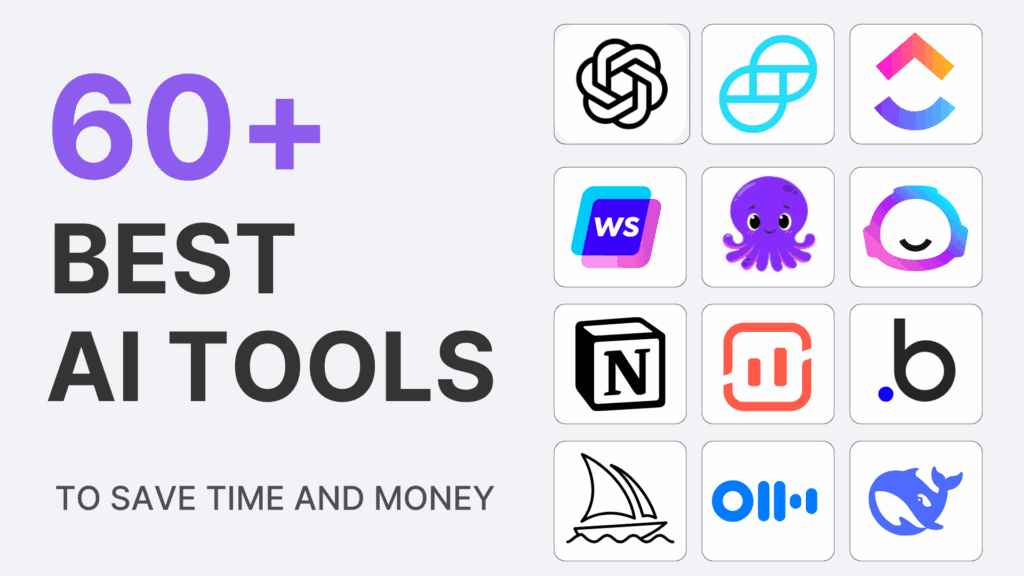In the context of digital marketing, impressions refer to the number of times an advertisement is displayed or viewed on a user’s screen. This metric quantifies the visibility and reach of an ad, indicating how often it is presented to potential viewers. Each instance of an ad being fetched and appearing on a user’s device counts as one impression, regardless of whether the user interacts with the ad.
Impressions are commonly measured per thousand and expressed as CPM (Cost Per Mille), representing the cost of 1,000 impressions. This fundamental metric plays a crucial role in assessing the success and impact of digital advertising campaigns.
Why are impressions important?
Impressions are important in the realm of digital marketing for several key reasons:
Visibility and Brand Exposure
Impressions quantify the visibility of an advertisement. A higher number of impressions indicates that an ad is being frequently displayed, contributing to increased brand exposure. This heightened visibility is crucial for building brand awareness and recognition among the target audience.
Campaign Reach and Audience Targeting
Impressions provide insights into the reach of a marketing campaign. By understanding how many times an ad is displayed, marketers can evaluate the effectiveness of their audience targeting strategies. This data is instrumental in refining target demographics and ensuring that the campaign reaches the intended audience.
Performance Benchmark
Impressions serve as a benchmark for evaluating the overall success of a campaign. Marketers often analyze impressions alongside other metrics like click-through rates and conversions to gauge the impact of their digital advertising efforts. A high number of impressions sets the stage for potential engagement and conversions.
Optimizing Ad Creatives
Tracking impressions helps marketers assess the effectiveness of their ad creatives. If the number of impressions is high but the engagement is low, it signals an opportunity to optimize the visual elements, copy, or format of the ads. This iterative process ensures that the creative components resonate with the target audience.
Refining Targeting and Budget Allocation
Impressions provide data on how well a campaign is targeting its intended audience. If impressions are significantly below expectations, it may signal the need for broader targeting. Additionally, marketers use impression data to allocate budgets efficiently, ensuring that resources are directed toward channels and campaigns that yield the highest impact.
Frequency Management
Monitoring impressions aids in managing ad frequency. Displaying an ad too frequently to the same audience may lead to ad fatigue, where users start to ignore or actively avoid the content. Marketers use impression data to strike a balance between visibility and avoiding potential irritation to users.
In essence, impressions offer a quantitative measure of an advertisement’s exposure, laying the foundation for evaluating and refining various aspects of a digital marketing campaign. By leveraging impression data, marketers can make informed decisions to enhance brand visibility, optimize targeting strategies, and ultimately improve the overall effectiveness of their digital advertising initiatives.
Types of impressions
Depending on the goals and objectives of a marketing strategy, different types of impressions may be prioritized and analyzed to optimize the overall effectiveness of a campaign. Here are some key types of impressions:
Ad Impressions
This is the most common type and refers to the number of times an advertisement is fetched and displayed on a user’s screen. Ad impressions are fundamental in gauging the visibility and reach of an ad campaign.
Viewable Impressions
Viewable impressions go a step further by measuring not just whether an ad was loaded, but whether it was actually viewable by the user. For instance, an ad at the bottom of a webpage might be loaded but not immediately visible unless the user scrolls down.
Unique Impressions
Unique impressions represent the number of individual users who have viewed an ad at least once. It provides insight into the unique reach of a campaign, helping marketers understand how many distinct individuals have been exposed to their content.
Click-through Impressions
This type of impression is specific to the number of times users click on an ad. It measures the initial interaction beyond just viewing, indicating the level of engagement and interest generated by the advertisement.
Social Media Impressions
In the context of social media marketing, impressions refer to the number of times a post is displayed on a user’s screen. This includes both organic and paid content. Social media impressions help assess the impact and visibility of content within a social platform.
Search Impressions
In search engine marketing, impressions relate to the number of times a website or page appears in search engine results in response to a user’s query. This metric is crucial for understanding the exposure of a website in search engine rankings.
Email Impressions
For email marketing, impressions indicate the number of times an email has been opened by recipients. It provides insights into the reach and engagement of an email campaign, helping marketers refine their strategies for better performance.
Video Impressions
In video marketing, impressions measure the number of times a video ad is displayed on a screen. This type of impression is particularly important for assessing the reach and impact of video content in advertising campaigns.
What are impressions in Affiliate Marketing?
In the context of affiliate marketing, impressions typically refer to the number of times an affiliate’s promotional content, such as banners or links, is viewed by visitors on a website or platform. Unlike some other digital marketing channels, where impressions might measure the display of an entire ad, in affiliate marketing, impressions often pertain to the visibility of the affiliate’s promotional materials.
When an affiliate places banners, links, or other promotional assets on their website or other online platforms, each time these materials are loaded and seen by a visitor, it counts as an impression. The goal of these impressions is to generate interest and potentially lead to clicks or conversions.
However, it’s important to note that in affiliate marketing, the primary focus tends to be on performance-based metrics like clicks, conversions, and sales rather than just impressions. Affiliates are often compensated based on the actions taken by the audience they drive, such as when a visitor clicks on an affiliate link and makes a purchase.
Impressions vs. Reach
While impressions measure the total number of times an ad is viewed, reach focuses on the unique audience size.
Both metrics play crucial roles in evaluating the effectiveness of a digital marketing campaign, with impressions providing insights into visibility and exposure, and reach offering a perspective on the campaign’s audience reach within a specific demographic or target group.
| Aspect | Impressions | Reach |
|---|---|---|
| Definition | Total number of times an ad is displayed/viewed. | Total number of unique users or households exposed. |
| Purpose | Emphasizes visibility, brand exposure, and frequency. | Highlights unique audience size, and potential influence. |
| Measurement | Expressed as raw count or CPM (Cost Per Mille). | Measured in absolute numbers or as a percentage. |
| Focus | Overall impact and frequency of ad campaign. | Unique scope of audience engagement. |
| Avoids Duplication | Counts multiple views by the same user. | Emphasizes unduplicated count of individuals exposed. |
| Metric Type | Raw count or CPM. | Absolute numbers or percentages of the total target audience. |
How to track impressions
Tracking impressions in digital marketing involves utilizing various tools and platforms to monitor the display or views of your advertisements. Here are steps and methods to track impressions effectively:
Ad Platforms and Ad Servers
Most advertising platforms, such as Google Ads, Facebook Ads, or display ad networks, provide built-in tools to track impressions. These platforms offer detailed analytics dashboards where you can find information on impressions, clicks, and other relevant metrics.
Google Analytics
Integrate your digital marketing campaigns with Google Analytics. While Google Analytics primarily focuses on website analytics, it can also provide insights into the performance of your online advertising efforts, including impressions.
Ad Server Software
Use ad server software like DoubleClick by Google (now part of Google Ad Manager), Adform, or OpenX. These tools allow you to manage, track, and optimize your ad campaigns, providing detailed reports on impressions, click-through rates, and other key metrics.
Social Media Analytics
Social media platforms (e.g., Facebook, Twitter, LinkedIn) have native analytics tools. These tools provide data on the performance of your ads, including impressions, engagement metrics, and audience insights.
Web Analytics Tools
If your ads lead to a website or landing page, tools like Google Analytics, Adobe Analytics, or other web analytics solutions can track impressions generated by visitors. Embed tracking codes or pixels in your web pages to gather data on ad views.
Impression Tracking Pixels
Implement impression-tracking pixels on your website or within your ad creatives. These pixels, often provided by ad platforms or third-party tracking services, help monitor when an ad is loaded on a user’s screen.
Third-Party Ad Verification Services
Consider using third-party ad verification services such as Moat, Integral Ad Science, or DoubleVerify. These services specialize in ad measurement, including tracking impressions, viewability, and ad fraud detection.
UTM Parameters
When creating ad URLs, incorporate UTM parameters to track campaign performance in Google Analytics. UTM parameters allow you to identify specific campaigns, mediums, and sources, providing granular insights into impressions.
Email Marketing Platforms
For email marketing campaigns, the majority of email service providers offer analytics features. Track email impressions within these platforms to understand how many times your emails have been opened.
Custom Tracking Solutions
Depending on your specific needs, you may develop or employ custom tracking solutions. This could involve creating proprietary tracking scripts or integrating with APIs provided by advertising platforms.
Regularly monitor these tracking mechanisms and analyze the data to assess the performance of your digital marketing campaigns. Adjust your strategies based on the insights gained from impression data to optimize your overall marketing efforts.
Conclusion
Understanding impressions is pivotal for navigating the intricacies of digital marketing. Impressions, reflecting the number of times an ad is displayed, come in various types, including ad impressions, viewable impressions, unique impressions, and more. Each type offers distinct insights into the visibility, reach, and engagement levels of a campaign.
The importance of impressions lies in their role as a foundational metric for assessing campaign performance. Whether measuring brand exposure, refining audience targeting, or optimizing ad creatives, impressions provide marketers with the quantitative data needed to make informed decisions. Balancing these insights with other performance metrics such as click-through rates, conversions, and reach is crucial for a comprehensive understanding of a campaign’s effectiveness.
To effectively harness the power of impressions, marketers can employ various tracking methods. Leveraging built-in tools on advertising platforms, utilizing analytics solutions like Google Analytics, and implementing tracking pixels are effective strategies. Additionally, third-party verification services and custom tracking solutions offer further options for precise measurement.











